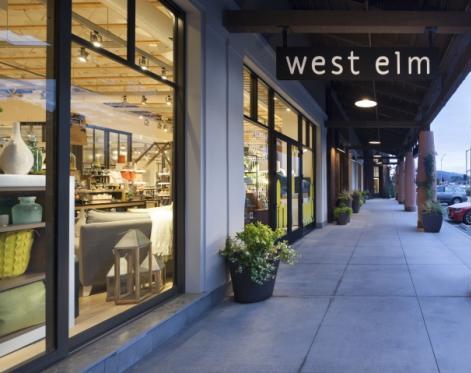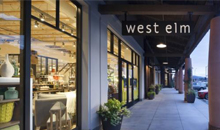
Driven by a double-digit comp increase at West Elm and growth in e-commerce net revenues, Williams-Sonoma Inc.’s third-quarter results demonstrate its “competitive strengths” heading into the holidays.
Most of muscle is coming from West Elm, which has been on an ongoing growth trajectory, giving cause for the company’s high hopes for the brand’s future.
“By delivering deeper and more meaningful customer experiences in all aspects of their lives at home, work and now while they travel, we believe West Elm is well-positioned to maintain its momentum on it journey to becoming a $2 billion brand,” said Laura Alber, Williams-Sonoma Inc. president and ceo, during the company’s earnings call Thursday evening.
West Elm’s 12% comp increase was the highest among the company’s nameplates in the quarter, ended Oct. 30. By comparison, total company comp brand revenue decreased 0.4%, with lackluster comps across its other major brands: down 4.6% at Pottery Barn; up 1.0% for Williams-Sonoma; down 1.0% for Pottery Barn Kids; and down 10.0% for PBteen.
“[West Elm] continues to experience gains across core segments, but was particularly strong in both furniture and lighting,” Alber elaborated.
In the third quarter, West Elm opened 10 new locations across the U.S.
“In each location we also continue to broaden our partnerships with both the makers and designers through our West Elm local program, garnering big interest from both customers and communities,” she continued. “Great experiential retail continues to be central to our overall customer engagement strategy and is a competitive advantage for the West Elm brand.”
Alber noted that over the past two years, West Elm has expanded its scope from home furnishings to design “that impacts everyday life at home, work and away.” That includes the brand’s entry in June 2015 into the $25 billion commercial furnishings market with West Elm workspace, and more recently, this past September, its expansion into the hospitality industry with West Elm Hotel.
The first hotels are expected to open in late 2018.
“Importantly, these types of initiatives provide innovative ways for customers to experience our brand offerings outside of visiting a traditional retail store,” Alber noted. “Because of our online competitive advantage, we're uniquely poised to convert these innovative brand experiences into sales.”
While more modest, Williams-Sonoma’s 1.0% comp increase in the quarter was significant in that this increase was partially driven by the addition of more Williams Sonoma Home installations into the brand’s doors.
Alber said home products were added to another six Williams-Sonoma stores in Q3, bringing our total to 36.
“In these locations we're seeing positive growth in sales, driven by conversion and average transaction size, validating that the strategy is working,” she said. “All of these stores are performing above our expectations. Importantly, when we add home installations to our stores we not only see increased sales in these stores, but we also see an increase in online sales of WS Home product in the surrounding areas.”
Williams-Sonoma Inc.’s net earnings slipped 1.6% to $69.3 million from $70.4 million, while diluted earnings per share increased by one cent to $0.78 from $0.77.
Net revenues increased 1.0% to $1.24 billion from $1.23 billion last year. And retail net revenues decreased 1.2% to $597 million from $604 million.
E-commerce net revenues grew 3.3% to $649 million in the quarter versus the year ago period’s $628 million, and generated 52.1% of total company net revenues for the quarter.
Another highlight in the period were merchandise inventories, which were down 3.5% to $1.06 billion from $1.10 billion.
(Source: homeandtextilestoday.com Author: Cecile Corral)



























 沪公网安备31010402003309号
沪公网安备31010402003309号